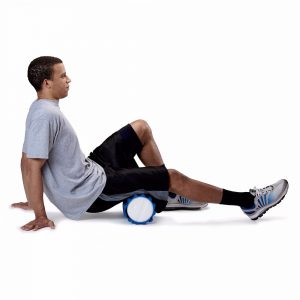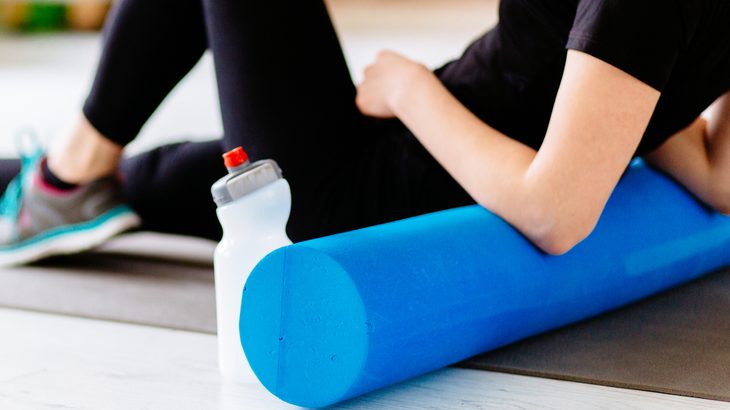How Do You Roll??
How Do You Roll??
Are Foam Rolling Advocates Stretching the Truth?
Foam rolling is one of the most common means of self-care for so many people. It has been thought to provide many benefits such as enhanced performance, improved flexibility and speed, pain reduction and muscle recovery. Often it is referred to as a self-massage technique, hence people thinking it is comparable to the benefits of an actual massage. Spoiler Alert! It’s not. As a matter of science, it looks like it barely does much at all, unless of course you are an elite athlete. In which case, a small improvement in performance of .03% may be the difference between winning or losing a 100M sprint. I submit that the vast majority reading this won’t be competing in the next Olympics.
The question now becomes; is the time/benefit trade-off even worth it or is there something better to do that is less uncomfortable and more beneficial, such as static stretching? A recent Meta-Analysis of the Effects of Foam Rolling on Performance and Recovery was published in Frontiers in Physiology., 09 April 2019. The results indicated:
- Pre-rolling causes a small acute improvement in sprint performance and flexibility, while its effect on jump and strength performance was negligible.
- When foam rolling is used as a recovery tool, participants experience slightly reduced decrements in sprint and strength performance and a small reduction in the severity of muscle pain.
- A tendency was found for foam rollers to offer larger recovery effects than roller massagers, while the differences in the effects between FR devices in terms of pre-rolling did not seem to be of practical relevance.
Consequently, the effects of pre-rolling on sprint performance seem to be more relevant for elite athletes, while it is possible that recreationally active individuals may not benefit substantially from pre-rolling.
So, should you still foam roll?? Like most decisions we make about our own personal wellness, it depends. The study did indicate that FR was effective at reducing pain. Constant and vigorous pressure exerted on the soft tissues may overload the skin receptors, thus inhibiting or minimizing pain sensation and increasing stretch. This hypothesis is supported by the findings of Aboodarda et al. (2015)and Cavanaugh et al. (2017) who have shown that FR can improve pain perception. Is that enough reason to continue?
Like any intervention, you should always understand what impact it is going to have on your wellness.  When so many of us are looking for extra time in our lives, the time we spend taking care of ourselves is always precious. If your objective for using a FR is to improve flexibility or performance, you may want to go back to your roots; static stretching. That’s right, the static stretching that so many people now claim is detrimental to performance outcomes. For example, the study goes on to point out that studies show that despite causing an acute increase in range of motion in the joints, prolonged static stretching of more than 60 s per muscle is likely to result in significant performance impairment. Therefore, one might assume that prolonged static stretching is not recommended during pre-event warm-up activities, especially when performance is required immediately after stretching. However, in studies that conducted performance tests >10 min after static stretching, performance changes were typically statistically trivialunless extreme stretch protocols were used. Moreover, potential performance decrements caused by static stretching are insignificant with shorter stretching durations (i.e., <60 s) and appear to be resolved after a complete, progressive pre-exercise warm-up routine. Therefore, strong evidence supports the deleterious effects of static stretching prior to performance, but when used properly, static stretching can promote flexibility and injury prevention without negatively affecting muscle.
When so many of us are looking for extra time in our lives, the time we spend taking care of ourselves is always precious. If your objective for using a FR is to improve flexibility or performance, you may want to go back to your roots; static stretching. That’s right, the static stretching that so many people now claim is detrimental to performance outcomes. For example, the study goes on to point out that studies show that despite causing an acute increase in range of motion in the joints, prolonged static stretching of more than 60 s per muscle is likely to result in significant performance impairment. Therefore, one might assume that prolonged static stretching is not recommended during pre-event warm-up activities, especially when performance is required immediately after stretching. However, in studies that conducted performance tests >10 min after static stretching, performance changes were typically statistically trivialunless extreme stretch protocols were used. Moreover, potential performance decrements caused by static stretching are insignificant with shorter stretching durations (i.e., <60 s) and appear to be resolved after a complete, progressive pre-exercise warm-up routine. Therefore, strong evidence supports the deleterious effects of static stretching prior to performance, but when used properly, static stretching can promote flexibility and injury prevention without negatively affecting muscle.
Next time you hit the mat to roll out the hammys and claves, consider the time/benefit tradeoff between foam rolling and just your basic stretching. I think you will find it much more beneficial and a lot more relaxing…..which of course is another great side-effect of stretching. 😉
Ready to #feelbetter?
You're just a click away from a wicked good massage!
-

60 Minute Massage Gift Card
$170.00 Add to cart -

90 Minute Massage Gift Card
$255.00 Add to cart -

Mini Aer Small Room Air Purifier
$149.00 Add to cart -
Sale!

Thera-Pearl Sports Pack/Hot Cold
Original price was: $14.99.$12.99Current price is: $12.99. Add to cart -

3 Somadome Sessions Gift Card
$135.00 Add to cart -

20 Minute Somadome Gift Card
$45.00 Add to cart -
Sale!

TheraBand® Stretch Strap
Original price was: $19.99.$14.99Current price is: $14.99. Add to cart -

TheraBand CLX Connective Loop
$14.99 Select options
Muscle Strains
A strain, sometimes referred to as a pulled muscle, is a muscle injury produced by excessive tensile stress that causes fibers to tear within the tissue. A muscle strain does not usually result from excess stretch alone, but from a combination of tension and contraction. Muscle strains can develop when excess tension is placed on…
Read MoreShin Splints or Compartment Syndrome?
One of the most common overuse injuries affecting the lower extremity is the condition known as shin splints. While the term shin splints routinely is used, especially among the athletic population, it does not represent a specific clinical pathology. Instead, it describes chronic shin pain resulting from overuse. It occurs in two regions of the…
Read MoreAn Alternative Approach to Stretching
Clinicians, athletes and rehabilitation specialists advocate stretching as a means for injury prevention and treatment. The primary purpose of any stretching technique is to enhance pliability and flexibility in the soft tissues. It is also routinely incorporated with massage in the treatment of pain and injury conditions. There are many different stretching techniques, which all…
Read MoreGanglion Cysts
The highly refined palpation skills of massage practitioners are such that we often identify tissue abnormalities before the client is aware of them. An indication that we should refer a patient for further evaluation is when we identify something we aren’t sure of but know shouldn’t normally be there. One such example may occur with…
Read MoreWhat Is the “End Feel”?
Some of the most valuable assessment information is derived from relatively simple procedures such as passive range-of-motion tests. While many massage practitioners have been exposed to the fundamental concepts of active and passive range-of-motion testing, most have not learned how to use this information effectively in a clinical environment. In this article, we will focus…
Read MoreHow Accurate Is That Test?
Physical assessment is considered one of the most accurate ways to assess function of the locomotor tissues of the body. While we can often gain valuable information about structural problems through high-tech diagnostic procedures like X-ray or MRI, these procedures tell us very little about the function of the tissues involved in creating and limiting…
Read MoreWhen Is It Tendinitis?
Tendinitis is one of the most common diagnoses for soft tissue pain resulting from repetitive motion. As repetitive motion disorders have dramatically increased, so has the incidence of tendinitis. However, recent investigations into the cellular nature of tendon pathologies have brought forth interesting discoveries that may alter the way tendinitis is treated. In this month’s…
Read More- « Previous
- 1
- …
- 18
- 19
- 20


